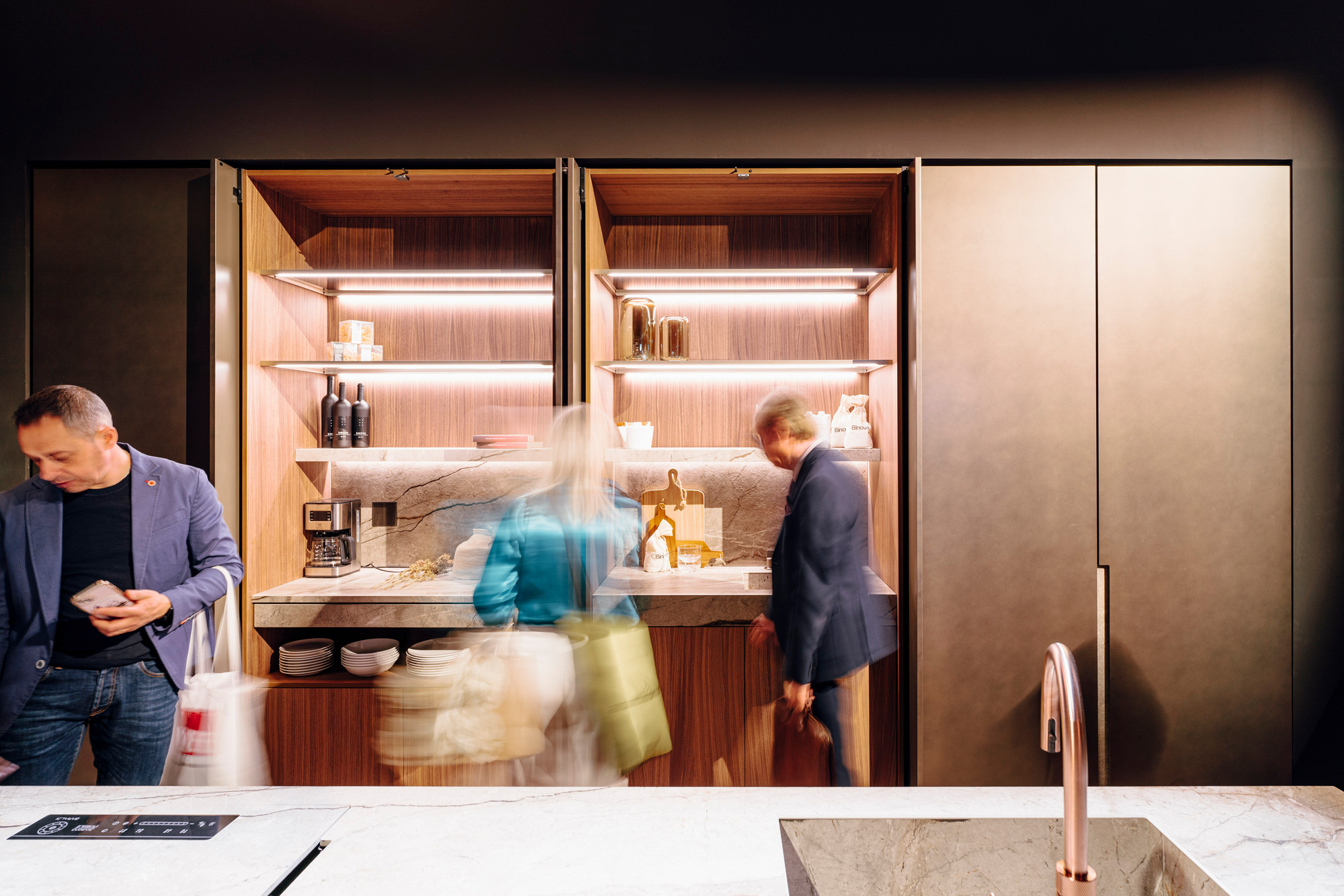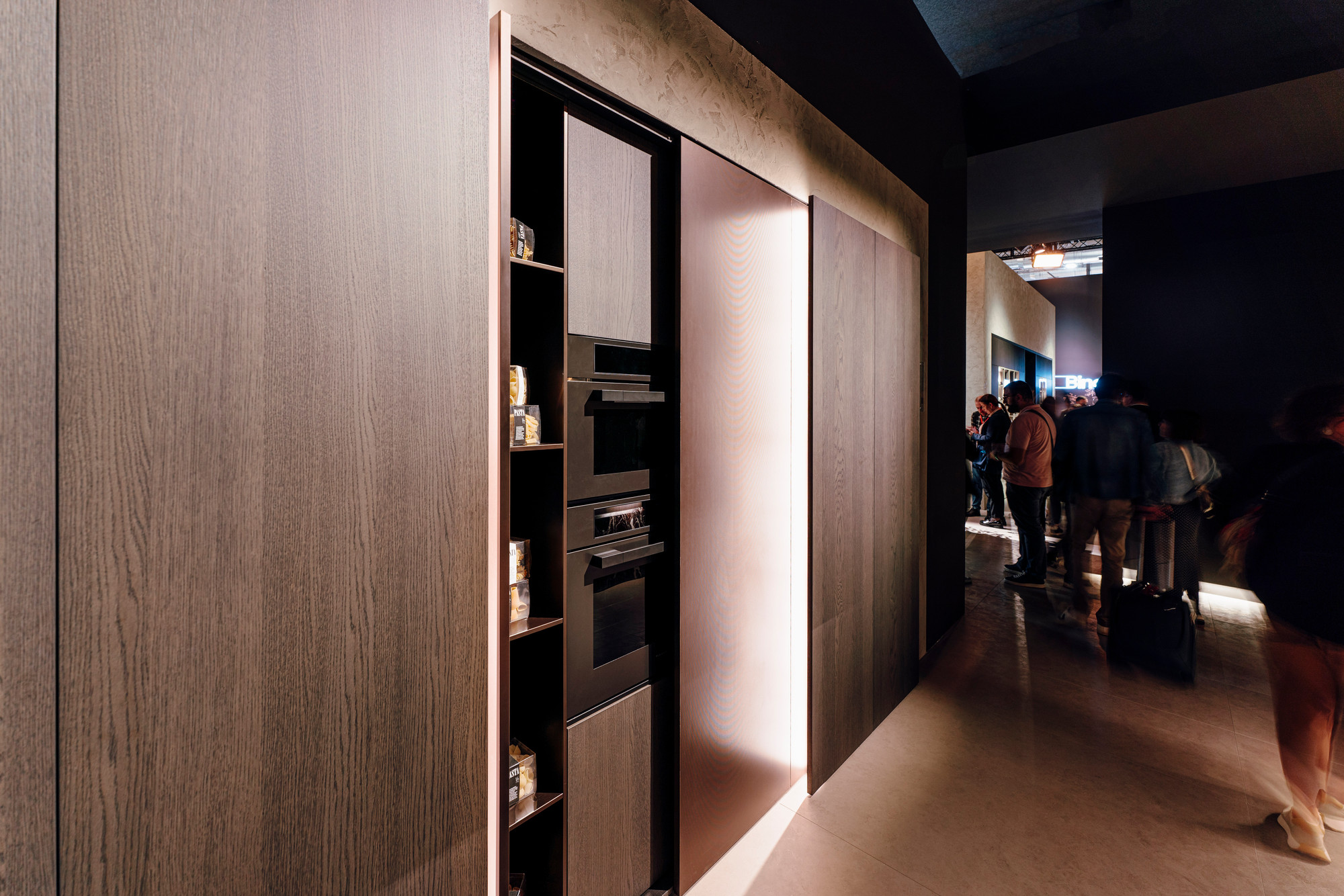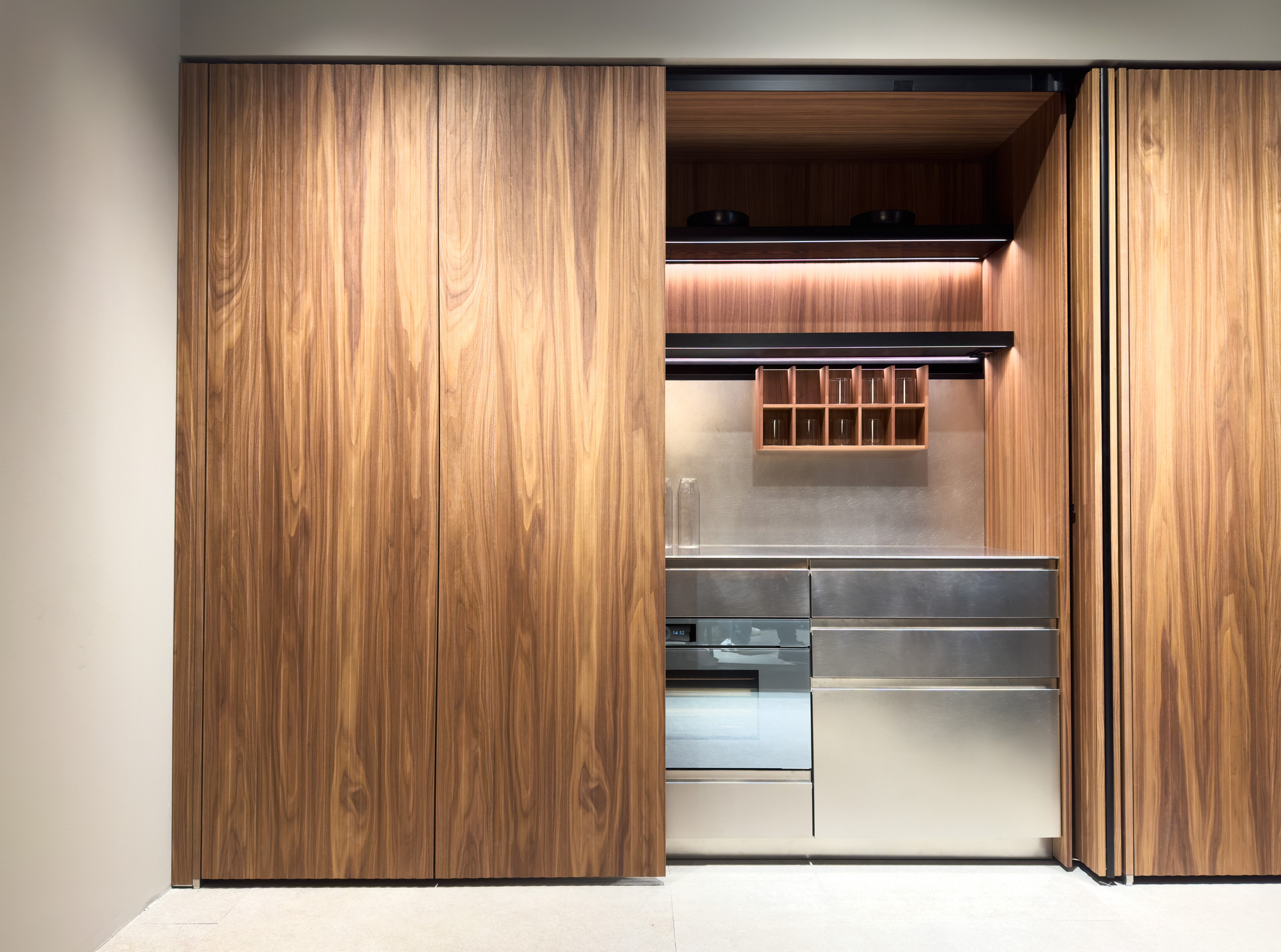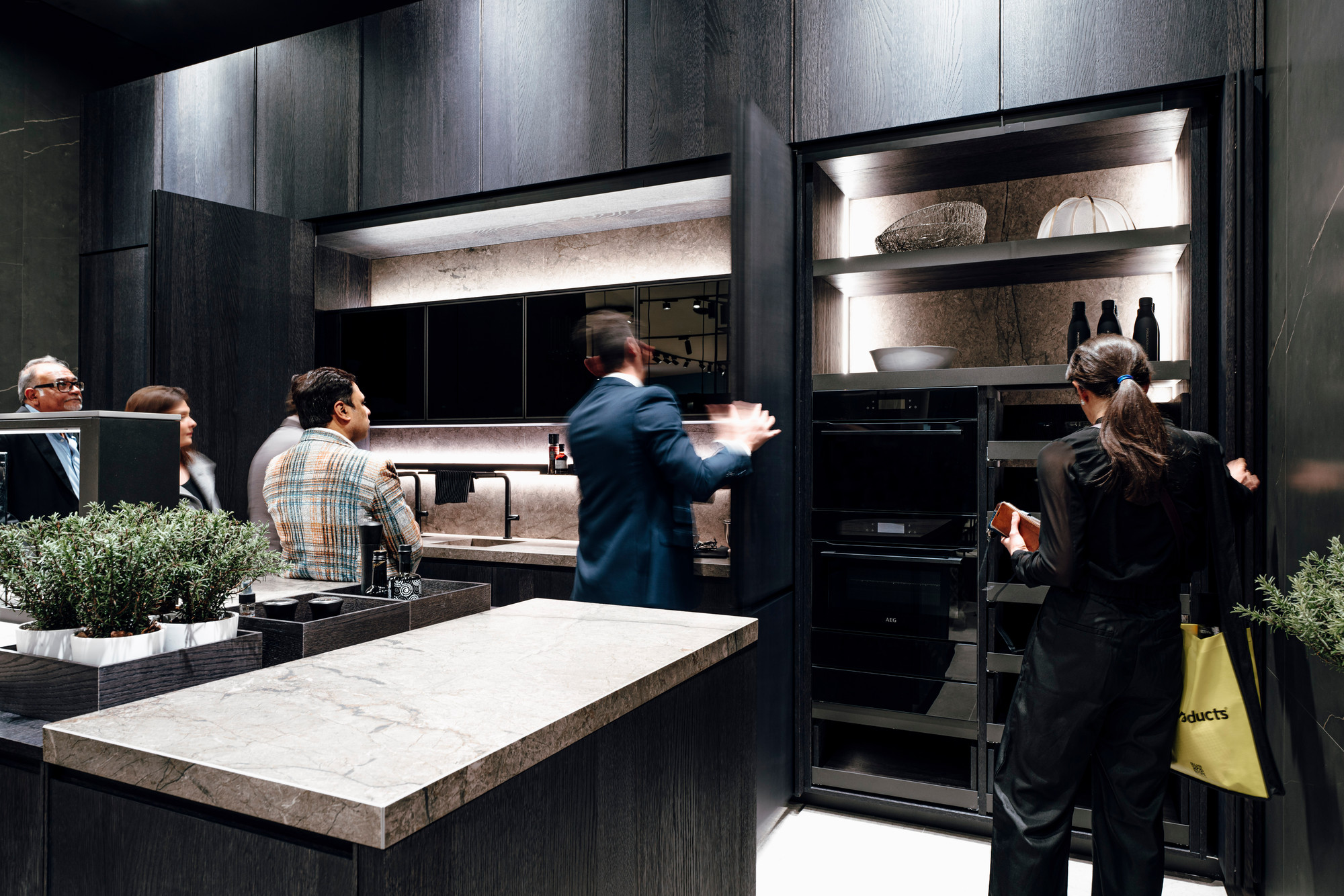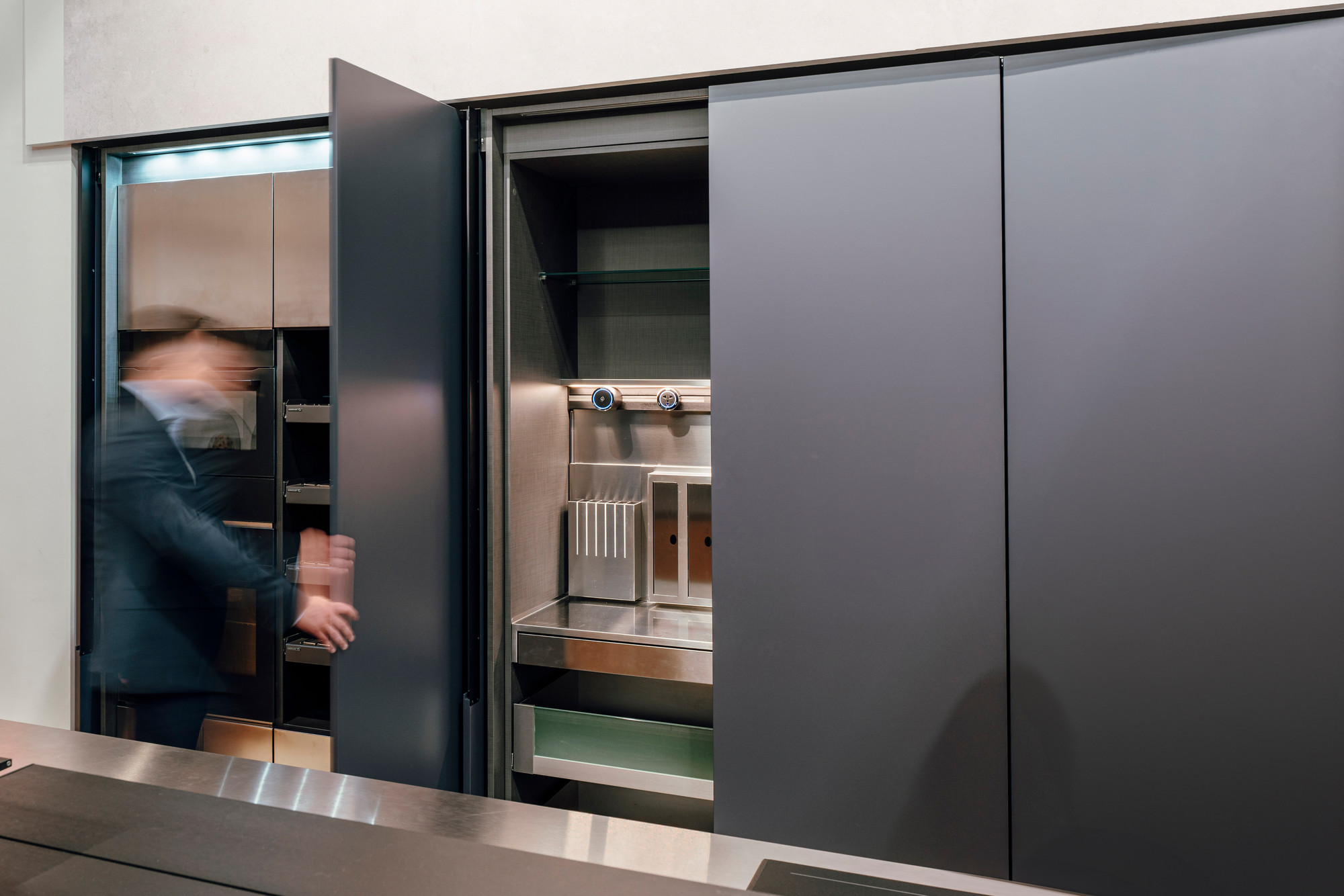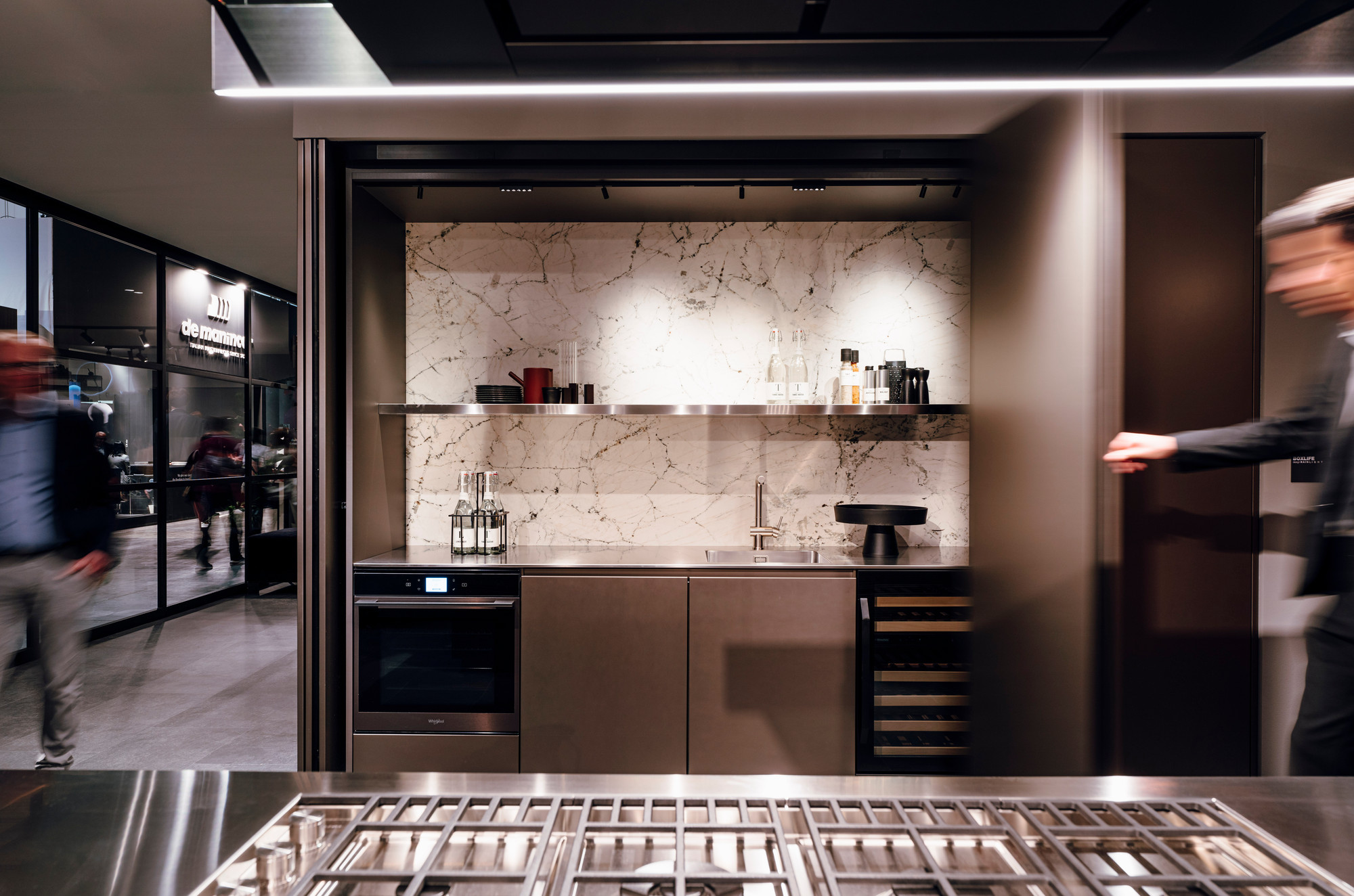News from Milan
The kitchen is taking center stage. But what does that mean?
A trend report from EuroCucina.
There was a great deal of interest at EuroCucina in Milan. Long queues formed in front of some of the stands. Visitors had to wait patiently to take a look at the trade fair innovations. But what was there to see? What are the latest trends?
The kitchen is moving even further into the center of the house and the transitions to the living area are becoming more fluid. But how can this work in practice?
On the one hand, by making kitchen fronts unrecognizable as such. What was presented at the stands of the renowned manufacturers could also have been the doors of living room, bedroom or wardrobe cupboards, or even simply sliding doors to a neighboring room. Fronts are now so simple and flush that they give nothing away. They are often more than just cupboard doors, reaching up to the ceiling.
They conceal everything that can be clearly assigned to cooking, i.e. worktop, oven, espresso machine, sink, mixer tap or even the entire kitchen. This provides flexibility in the use of space and ensures visual calm.
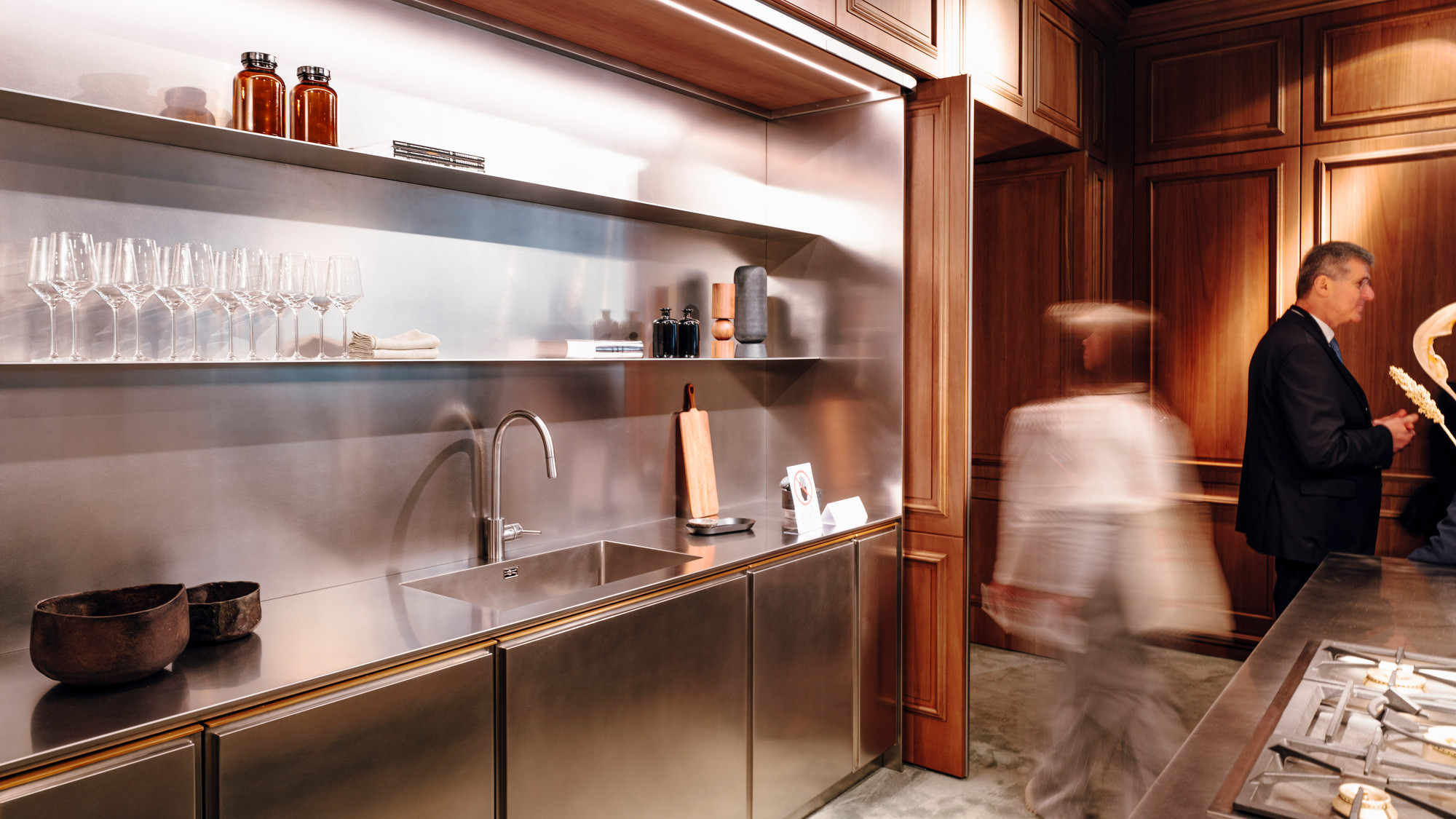
At the same time, fronts are becoming more homely. Almost a must if the kitchen is to become the focal point of the home. This is also ensured by the choice of mostly natural materials, which are harmoniously coordinated. There was a lot of wood on show, even solid wood, specifically elm, ash, black ash, fossil oak or natural oak and American walnut, but also lacquered surfaces in warm, earthy and reddish colors. Often in combination with natural stone such as marble, granite, sandstone or even stainless steel.

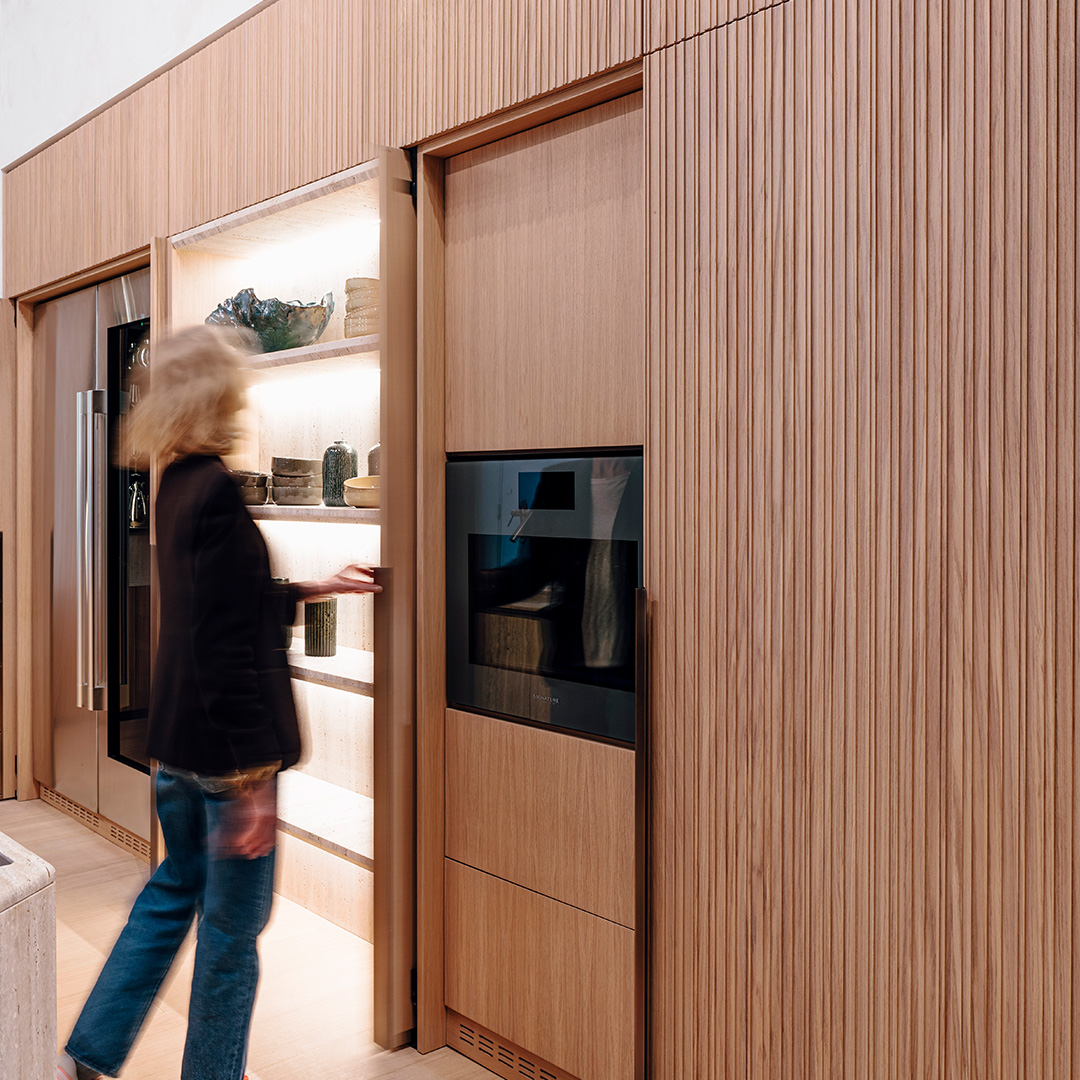
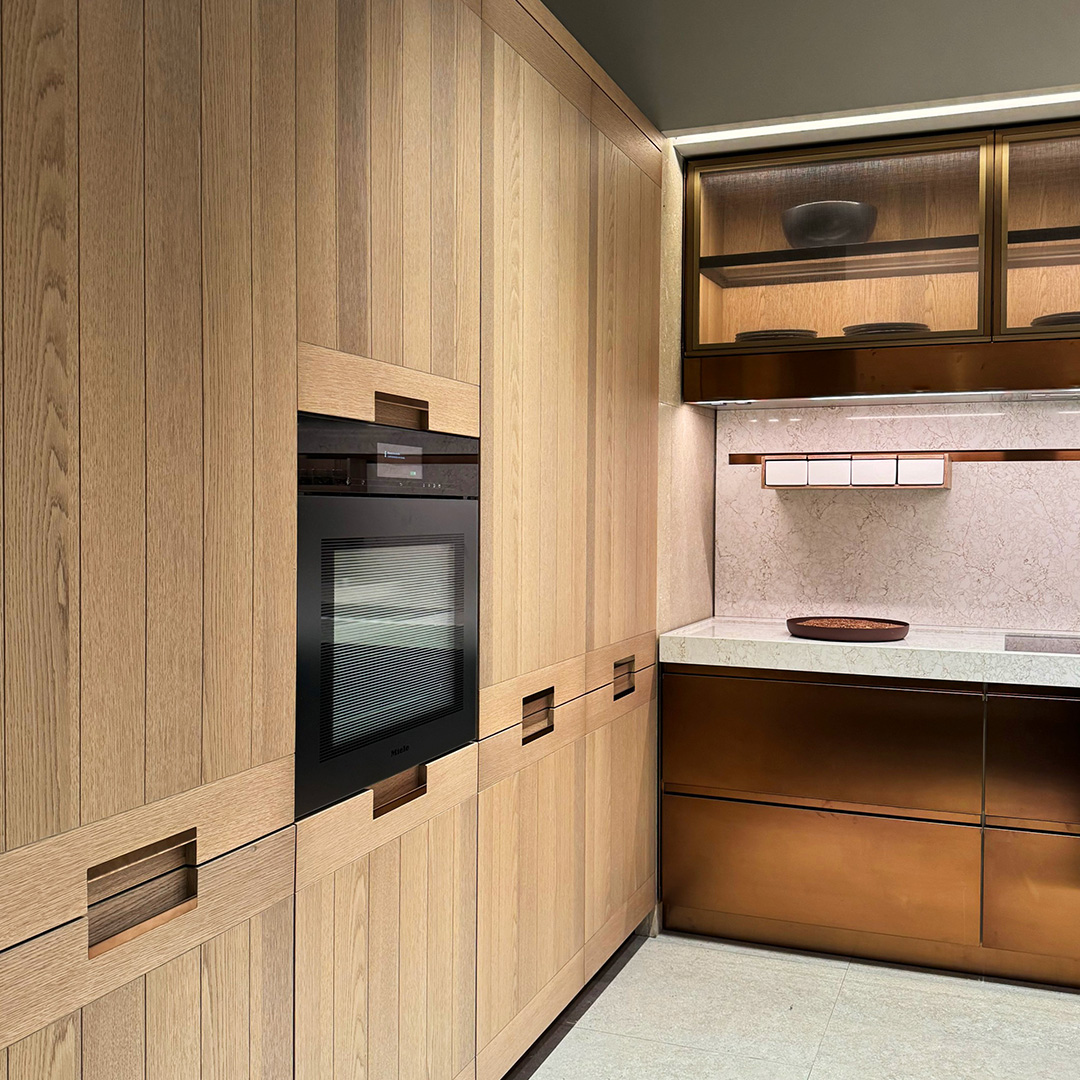

The front design was often striking, profiled, or a mix of textures and finishes: matt and polished, smooth and textured had their place side by side.
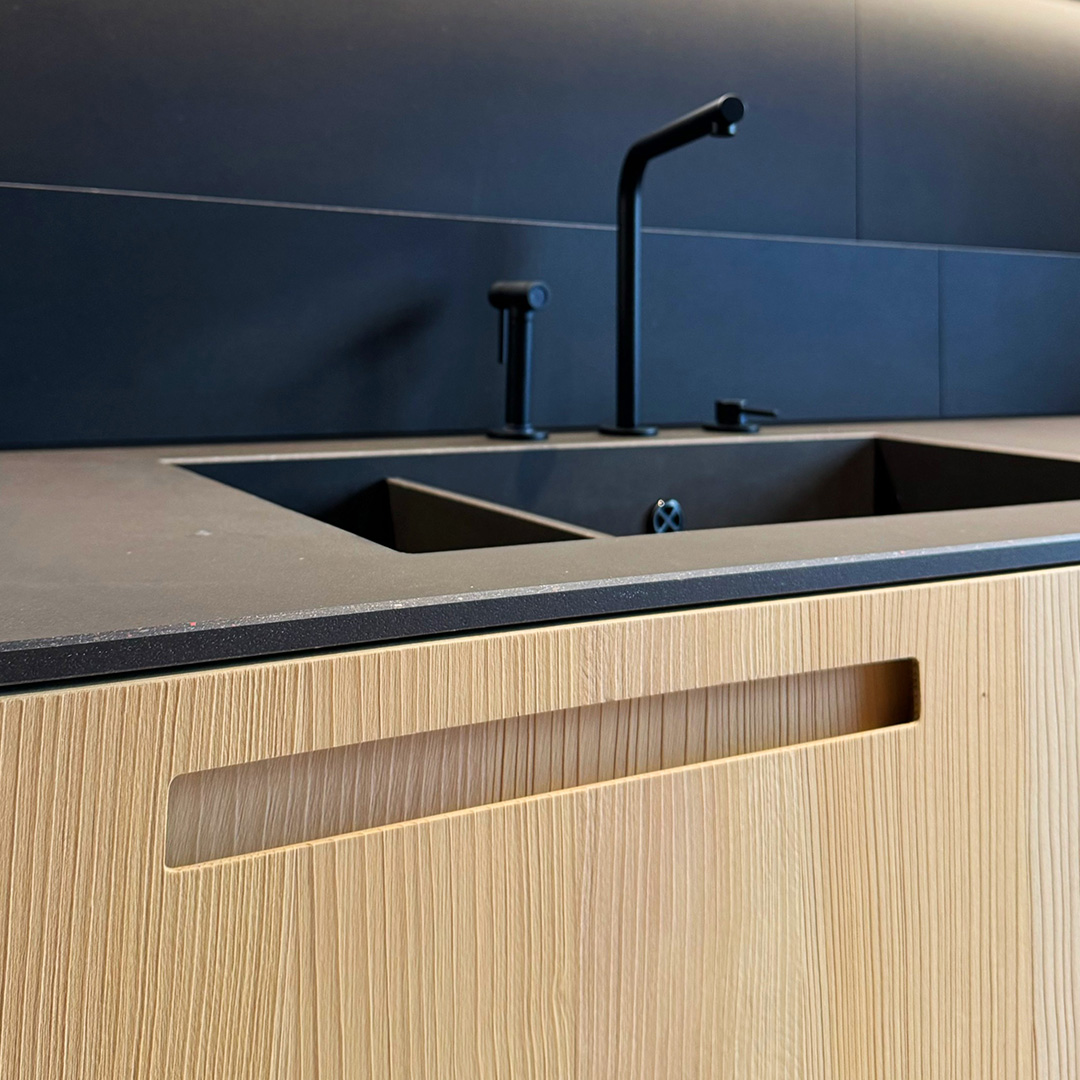

Metallic surfaces, often matt brushed in brass, gold, champagne and anthracite nuances, were a particular eye-catcher. Handles were usually integrated into the design, for example by incorporating recesses, using the same material or keeping doors and elements handleless anyway.
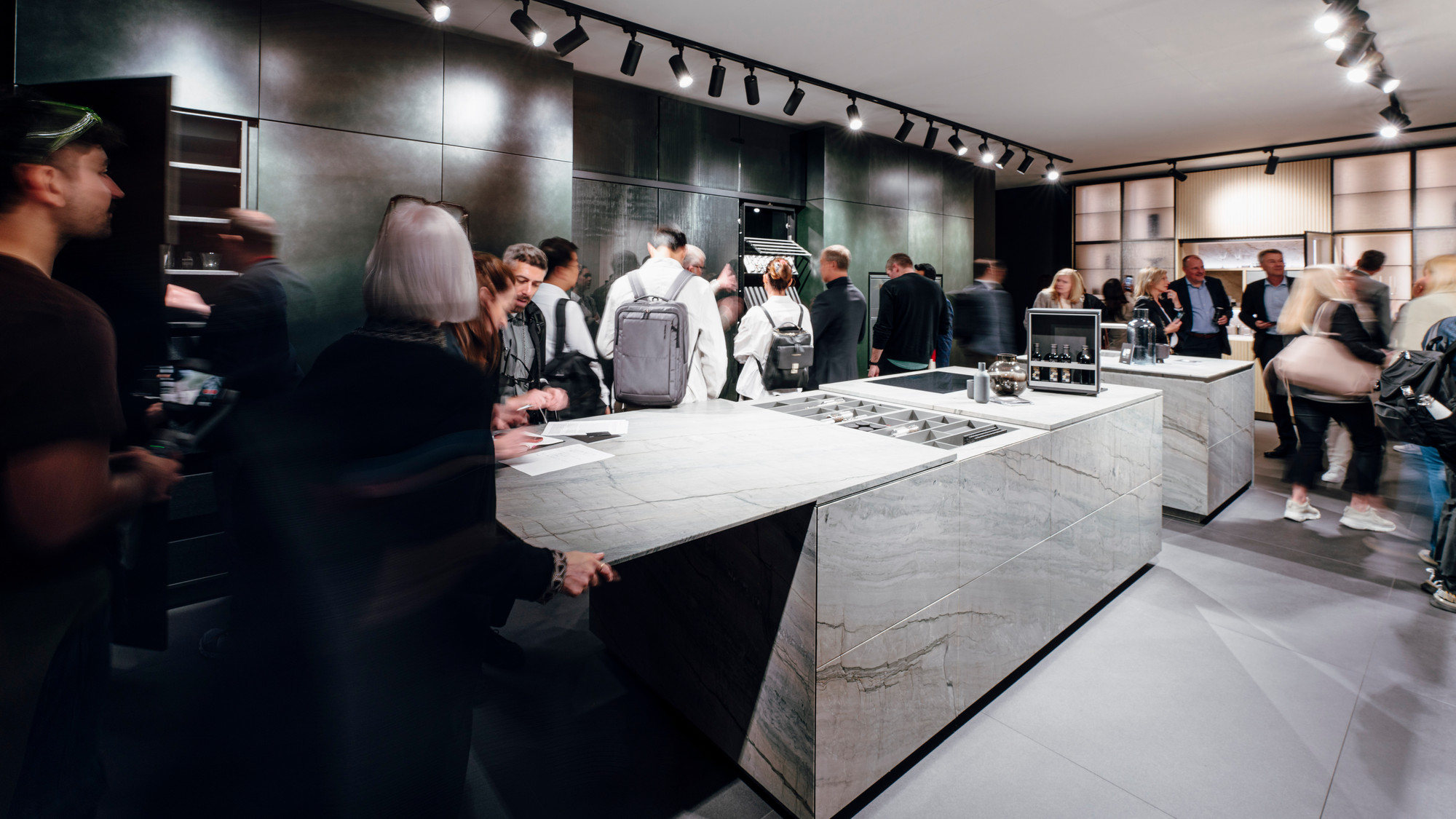
Another striking feature: cooking islands become the central element, sometimes even a sculpture, almost a work of art that attracts attention. As a result, the designers have planned for the cooking function to fade into the background, at least temporarily. Hobs are barely noticeable because they are flush-mounted and use a discreet recessed ventilation system. The cooking islands often have plenty of storage space in which all the tools can disappear. Some worktops can be opened and closed. Almost a standard feature: the option of connecting a dining table to the cooking island.

The kitchen is also homely when it comes to shapes. In contrast to the strict surface of the fronts, there is the softness of round tables and organic cooking islands, including rounded edges. This also allows for a visually smoother transition from kitchen to living space. Now that the intersection of the two areas has increased significantly in terms of function, the visual blend is following suit.
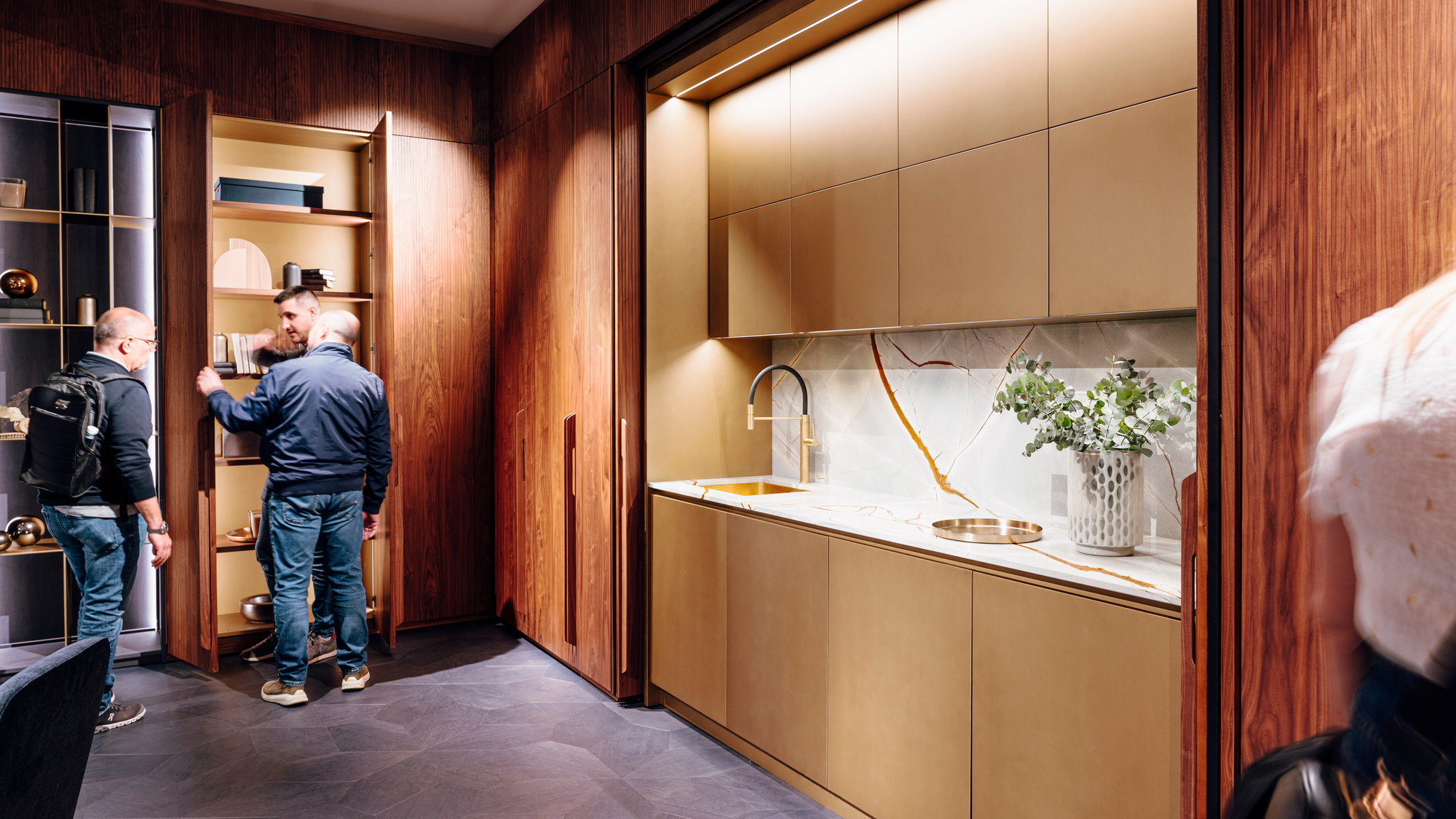
What most visitors did not notice, but only saw on closer inspection, was that the elegant and consistent implementation of the trend to make the kitchen more homely was achieved by many of the renowned kitchen manufacturers by using the new Hawa Concepta III hardware system, with which pivot and folding/slide-in doors disappear completely into pockets. Entire kitchen units can be brought out or concealed in this way. Big concepts often need little helpers and the freedom of living, the lightness of the design need a precisely fitting development in the background. The Red Dot Design Award jury also took a close look. They honored the Hawa Concepta III 2024 hardware family with a Red Dot in the Interior Design Elements category.
More about our innovative pivot and folding/slide-in hardware